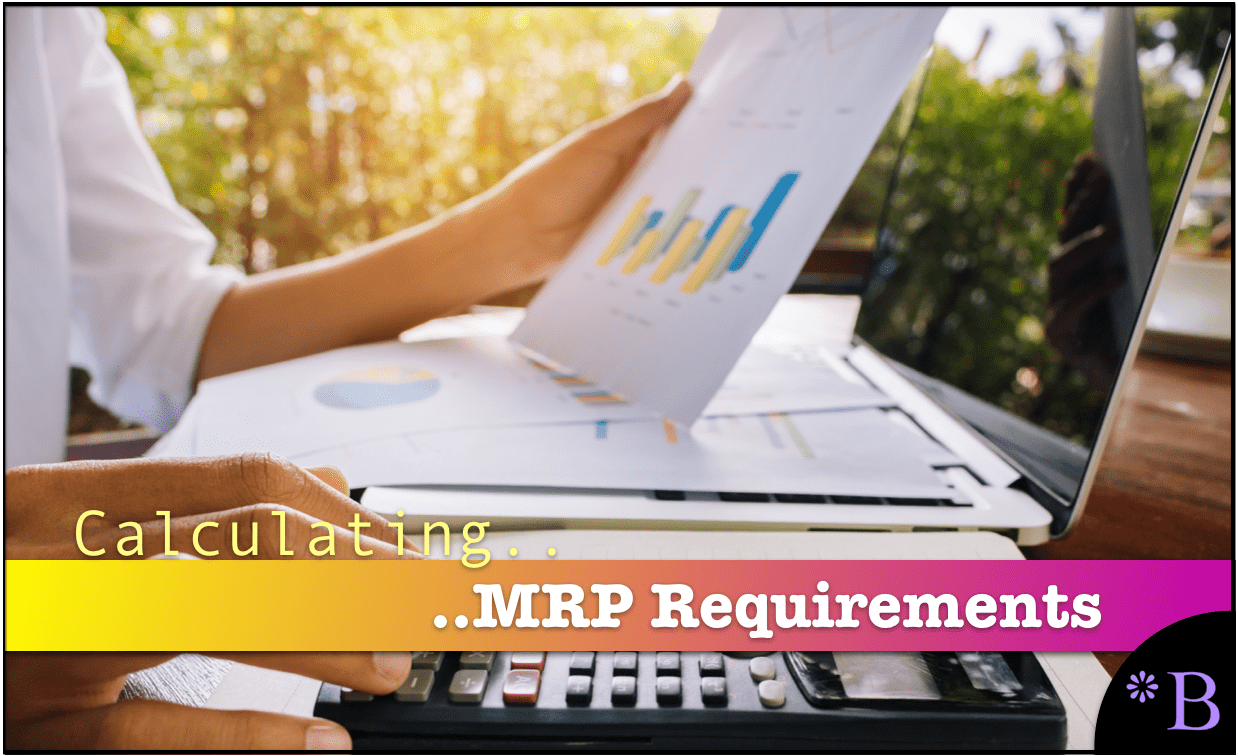How to Best Use The Brightwork Research MRP Calculator
Executive Summary
- We cover MRP and how it works, as well as material requirements planning in production systems.
- We have an MRP calculation form and calculate an MRP example.
- This article is for anyone who wants to validate their assumptions around MRP calculation.

Introduction to the MRP Requirements Calculator
MRP stands for “materials requirements planning.”
Our References for This Article
If you want to see our references for this article and related Brightwork articles, visit this link.
“Material requirements planning software (MRP) is used to describe the process of planning manufacturing inventory – what products to make and what items to buy, when, how much, and from who – all based on supply and demand.” – What is MRP Software
What is MRP?
MRP is one of the most important methods in supply chain planning. In performing research for this book, I found that MRP is the most commonly used term in supply chain planning, the next closest one being inventory management. This is true even though MRP is an old planning method, and more advanced techniques of creating the initial supply and production plan have been created. However, MRP, and its cousin DRP (MRP used for bringing material into the supply network, while DRP pushes material through the supply network), while old, are still the most common methods of performing supply, production, and deployment planning.
Interestingly, MRP is a much more commonly used term than DRP, or distribution resource planning, which is almost always used in conjunction with MRP and is the other topic covered in this book. In most instances, when a company talks about their MRP system, they mean their MRP/DRP system. But while both methods are used, I will be focusing on MRP for this book.
How Does MRP Work
MRP is a procedure for calculating dependent requirements based upon a bill of materials working backward from the demand (also called “independent requirements”) of a forecasted item (MRP is emphatically a forecast-based planning method) along with sales orders which, when combined with lead times, creates a series of planned production orders and purchase requisitions which are all timed to allow the demand to be met with the expected supply. MRP has these frequently unstated prerequisites:
Every inventory item moves into and out of stock.
All components of an assembly are required at the time the assembly order is released.
Components are disbursed and used in discrete lots.
Each manufacturing item can be processed independently of any other. – Orlicky’s Material Requirements Planning
Material Requirements Planning MRP does some things in one procedure. It is a great time saver because of this ability, and of all the supply planning methods, it is the easiest to understand.
- It explodes the bill of material.
- It then assigns production and procurement quantities to the appropriate time buckets.
However, one of its main calculations is creating gross requirements and net requirements, which is the topic of this calculator.
Using MRP Calculation in Supply and Production Planning Systems
Material Requirements Planning MRP is still the most common method used in supply and production planning. It does both supply planning because it creates the planned purchase orders (called purchase requisitions).
It also does production planning because it creates planned production orders.
How the MRP Calculation Form Works as An MRP Example
It is almost always combined with DRP with Material Requirements Planning creating the production and procurement plan and with DRP creating the deployment plan.
- This is because Material Requirements Planning only brings material into the supply network.
- It does not move the material through the supply network. This method also uses the same calculation approach to gross and net requirements and is often called DRP but is broadly known as the deployment planning thread.
- In SAP, it also tends to show the same rows as Material Requirements Planning with forecast consumption. That is how sales orders consume the forecast by working the same way.
How the MRP Calculation Form Works as An MRP Example
This MRP calculation form requires input to provide output. However, it also has default values. You can change any input value and the rest of the formula — the output will change immediately. You can continue making changes, and the form will always update without having to press any button or refresh. You can use the MRP calculation form as an MRP example to explain how the MRP system calculation works.
For the dynamic safety, stock calculator see this article.
Learn about the history of MRP in this article.